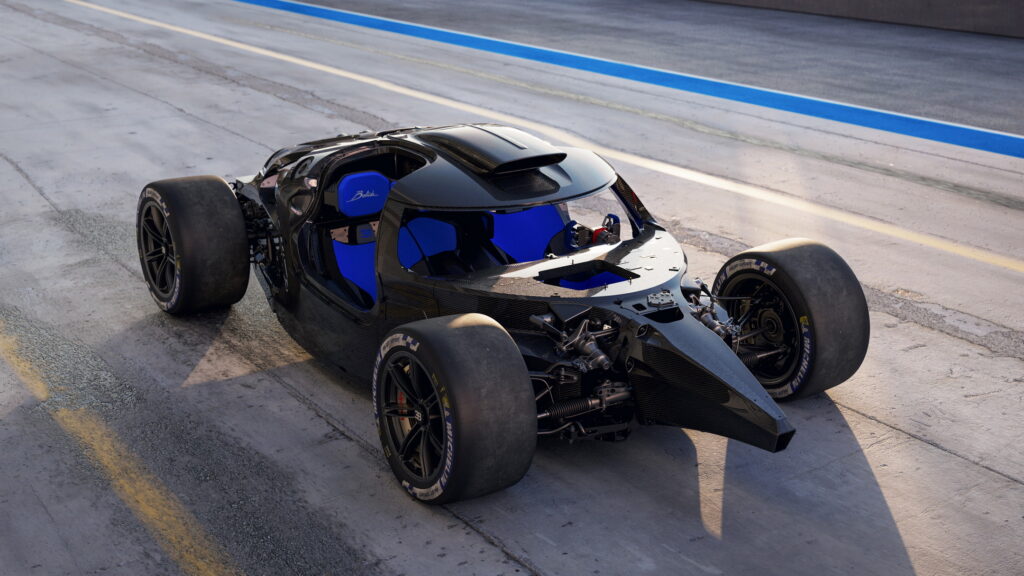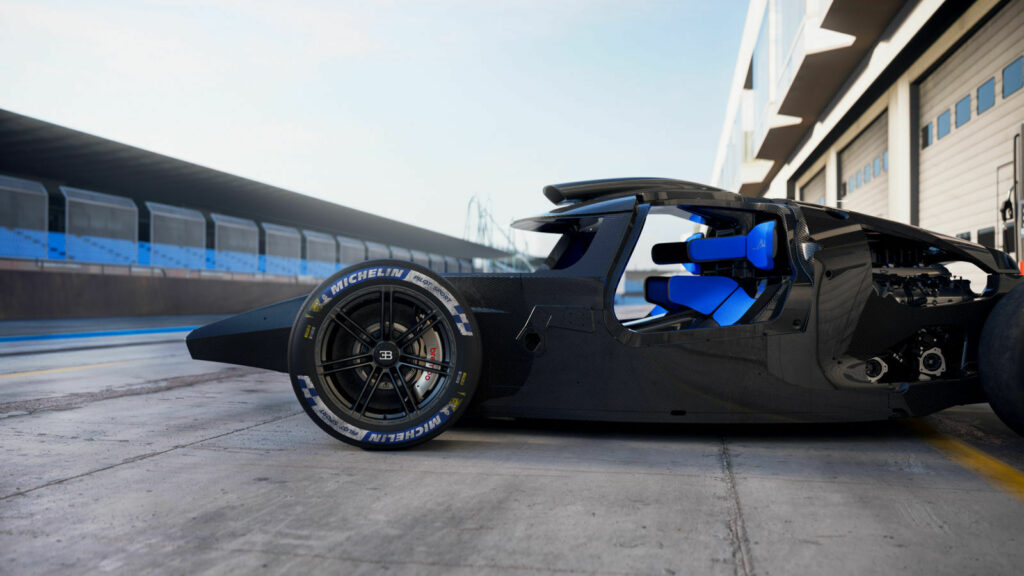This track-only hypercar meets FIA standards for LMH and LMDh Le Mans racing and even has a military-grade fire extinguisher
2 hours ago
 –>
–> 
–>
In a world full of one-off or low-production supercars and hypercars it could be easy to believe that each is just a slight riff off of a base vehicle. Bugatti’s Bolide clearly has familial ties to the rest of the lineup but the automaker just showed us how different it is under the skin. This track-only hypercar has real FIA-spec safety tech throughout.
Bugatti goes as far as to say that the type of special monocoque in the Bolide is typically reserved for F1 and Le Mans cars only. It highlighted its performance in a series of roll-over crash tests. In the first, the A-pillar sustained a 7.5-ton load without cracking. The second saw the B-pillar withstand 12 tons while a third involved a 6-ton longitudinal load to the monocoque.
Bugatti’s Chief Engineer for the Bolide, Christian Willmann, described the process of preparing for those tests saying: “To pass these stringent but critical safety tests, we needed to ensure that everything about the monocoque was technically perfect so that on the track the Bolide is a race car that is safe and secure in every driving situation and environment.”
advertisement scroll to continue
More: Successor To The Bugatti Chiron “Is Finished” And Will Debut In 2024

This meant that the monocoque required optimization across all facets, from its architecture through to the wall thicknesses and even the new super-high-strength carbon material, which is the highest performing of its type in the world.
This illustrates the extensive engineering we’ve carried out to ensure that the Bolide is uncompromising in its approach to safety, meeting the exacting standards demanded by FIA. “On top of the outstanding safety structure, the Bolide features a number of additional measures to keep its one-percenter-occupants safe.”
That includes a military-grade fire extinguisher system, six-point FIA-approved seating harnesses, and multi-piece seat headrests that meet GT3 racing regulations. When customers begin receiving their cars in 2024 they can be certain that they’re wrapped in a cocoon of safety and technology.


